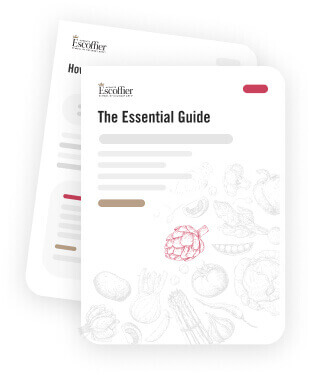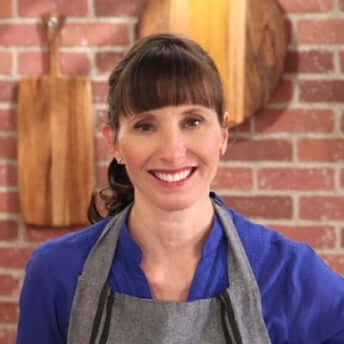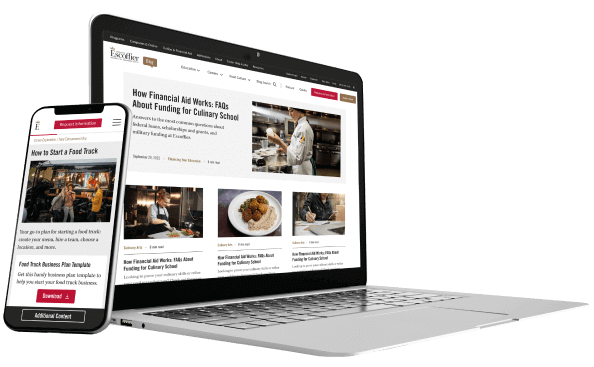Listen to This Article:
Have you ever dreamt of having your name on the front of a cookbook, with each recipe telling the story of your culinary passion? A published cookbook is an impressive achievement for a chef. It’s a chance to share your recipes with the world while also building your personal brand. But what does it really take to achieve this dream?
Before diving into the process, it’s important to know that there’s more to creating a cookbook than writing recipes. As a cookbook author, you’ll have to make important decisions about the book’s concept, design, and promotion.
Writing a cookbook is a labor of love, but in the end, you could be a published author with a work you can be proud of. Here’s a step-by-step guide to how you can create a cookbook.
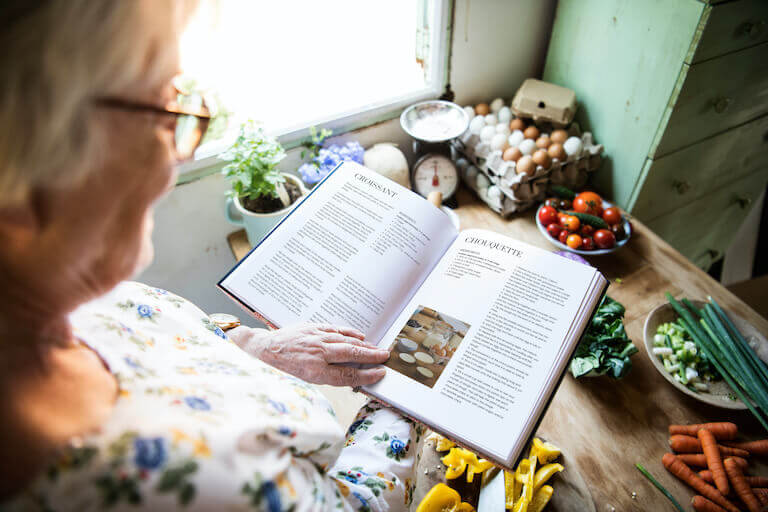
Publishing a cookbook can help you share your expertise and recipes with others.
Cooking Up a Cohesive Concept
Before writing a word, you’ll need to develop a concept. Most cookbooks focus on a specific niche, which makes them attractive to a certain subsection of people, helping them stand out in a crowded market.
When choosing a concept for your cookbook, try the following:
- Identify Your Expertise: This could be a single type of dish that you’re an expert in, like Auguste Escoffier School of Culinary Arts Chef Instructor Colette Christian’s book Mastering Macarons: Classic to Contemporary Techniques. Or it could pull together your favorite recipes for a specific diet such as a vegan or vegetarian cookbook.
- Look for Current Trends: Conduct market research to identify gaps in the cookbook market that you have the experience to fill. Look for areas you feel are missing in current cookbooks and identify where your interests and passions intersect.
- Choose a Target Audience: Are you sharing recipes for home cooks looking for a quick weeknight meal or food enthusiasts looking to add a gourmet touch? Considering who you’re creating your cookbook for can help steer your direction.
- Craft a Unique Angle: Do you have a personal story to tell with each recipe? Are you focused on sustainable cooking practices? Think about what will set your cookbook apart from others.
Choosing your concept can help you curate your recipes around a central theme, making the cookbook cohesive. Write a concept statement of a few sentences that will guide you through the writing process and help keep you focused on the goal.
Self-Publishing vs. Traditional Publishing
Before starting the writing process, you’ll need to choose what path you want to take to publish it. This decision will impact the rest of your writing process from writing and editing to marketing.
Here’s what to know about traditional publishing vs. self-publishing.
Why You Might Choose to Publish Your Cookbook Traditionally
Publishers May Offer Advance Payment for Your Cookbook
Publishers generally pay authors in advance against future royalties. You can use these funds to cover some of the costs of book creation, like testing recipes, taking photos, and possibly even a book tour. Without a publisher, you will have to cover these costs yourself.
The publisher will recoup this advance from your royalties. For example, if you get a $100,000 advance, you will not receive any royalty money until that advance is repaid through your book sales. If you don’t sell enough books to repay the advance, you don’t have to pay it out of pocket—but you won’t receive any royalties past the initial advance.

Working with a traditional publisher can have many benefits throughout the process.
Publishers Have Established Distribution Networks to Help Sell Your Book
Publishers may be able to get your book into more stores and retailers than you could on your own. They have established distribution channels that may include large retailers, online bookstores, and specialty shops. They also work at a large scale, so they can get your book printed at a lower cost.
Publishers Have Expertise and Resources to Market Your Cookbook
Traditional publishers have experienced editors, designers, and marketers to help sell your book. They can not only help create a stunning layout for your recipes but also help get the book in front of the right audience who may be interested in purchasing it. These pros can help get the word out about your cookbook. But keep in mind that they may be promoting a number of books at once, so they can be stretched thin.
Known Publishers Can Lend Credibility to Your Cookbook
If your cookbook is published by a well-known publisher, it can help you look more credible as an author and chef. This may help create new opportunities in your culinary career.
Validating Your Concept and Crafting a Compelling Proposal
A publisher can tell you if there is a market for your book idea before you spend months or even years writing it. Once you decide on your concept, you can write a cookbook proposal outlining what you plan the book to be about and include some sample content. If you have a large social media following or a well-known restaurant, this is key information to include as well. It will show that there may be a built-in market for your book.
You’ll then send this proposal to literary agents to find representation. And when an agent agrees to work with you, they’ll use your proposal to shop your idea to publishers. That’s why the concept comes first!
Why You May Choose to Self-Publish Your Cookbook
While publishing companies offer some serious benefits, self-publishing is becoming increasingly popular and can be a good option for potential authors for several reasons.
Self-Publishing Can Have Higher Royalties
As mentioned above, authors are paid a portion of the publisher’s revenue, called a royalty. Royalties are usually 20-30% of the book’s revenue. The publisher isn’t just pocketing the balance—they have to pay for printing costs, promotions, and other expenses. But they do keep a profit as well.
When self-publishing, you’ll be free to sell your book directly on your website, social media accounts, or at events.
Self-Publishing Allows You to Choose Your Publishing Options
If you self-publish, you’ll also have to pay for the printing costs, but you will keep all the profits instead of sharing them with the publishing company. You can also self-publish your book digitally for use on e-readers and tablets, which can dramatically reduce the costs of publishing.
On the downside, you’ll have to do all of your own promotion. And if you do print physical copies, you won’t be able to get your book in as many stores as a publisher could.
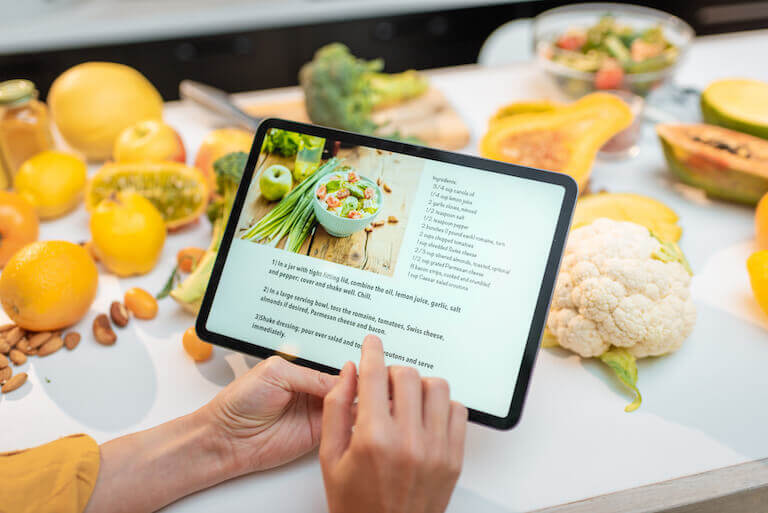
Digital publishing can make it easier and less expensive to self-publish a cookbook.
Self-Publishing Lets You Maintain Creative Control
You maintain all creative control when self-publishing. You have the final say on everything in your cookbook, from the recipes and wording selection to the images and layout. This may allow you to include a more personal touch or more of your tone of voice, personality, and culinary style.
Self-Publishing Can Be Faster
The turnaround time may be faster when self-publishing compared to traditional publishing. You don’t have to negotiate or work through edits with a publisher. And you won’t have to wait to fit into their schedule. The pace of the process from start to finish is yours to determine.
There is a lot of work that goes into self-publishing a cookbook, but the rewards can be significant. You can even make the process easier by building a team of freelancers, like editors, designers, and marketers, to help you along the way. With careful planning and strategy, your self-published cookbook may be a successful addition to your culinary career.
From Kitchen To Page: 7 Steps To Self-Publishing a Cookbook
The thought of self-publishing a cookbook may feel complicated and overwhelming, but it may help to think of the process the same way you follow a recipe. Take time to read and understand the process, get everything in place, and then follow the steps one at a time. The following seven steps can serve as your recipe for self-publishing your very own cookbook.
1. Start Testing and Collecting Recipes
Unlike a food blog, a printed cookbook can’t be easily updated if you accidentally make a mistake like writing tablespoon instead of teaspoon. It’s crucial to ensure each recipe is tested and perfected before putting it in print.
Start with recipes that you’ve already practiced and polished. For example, Escoffier Pastry Chef Instructor Colette Christian wrote her macaron cookbook after perfecting the recipe for her culinary school.
*Information may not reflect every student’s experience. Results and outcomes may be based on several factors, such as geographical region or previous experience.
Once you “finalize” each recipe, hand them over to a recipe tester to ensure they understand and can follow each step.
If this is the only part of the project that excites you, a collaboration project as a recipe developer may be more appealing than writing a whole cookbook. That’s what Escoffier Chef Instructor Paul Rocque did when he provided recipes to Sur La Table for their dessert cookbook, So Sweet! Cookies, Cupcakes, Whoopie Pies, and More.
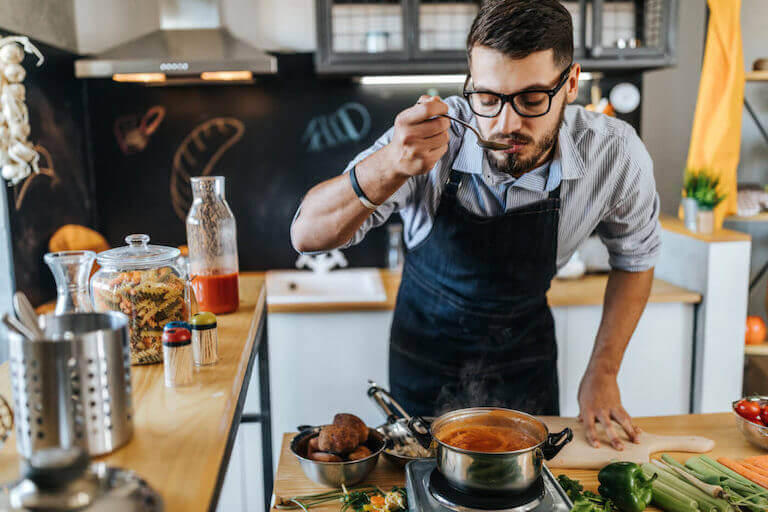
When publishing a cookbook, you want to ensure recipes are easy for home cooks to follow.
2. Organizing Ingredients: Creating Your Cookbook Outline
Writing without a plan is a sure way to confuse your readers rather than provide clarity.
As you collect your recipes, start organizing them into sections that make sense. These could be obvious categories like cakes, cookies, and pies for a baking cookbook. Or they could be more specific, like an Italian cookbook that organizes recipes by region.
When you have your recipes in the appropriate sections, you’ll have a rough outline of how your book will flow.
3. From Mise en Place to Manuscript: Writing Your Cookbook
Now that you have all the pieces in place, it’s finally time to write your cookbook!
Beyond the recipes themselves, most cookbooks contain additional written content, such as introductions, personal stories, recipe history, or the science behind certain techniques.
If you’re concerned about your writing skills, you can bring on a co-writer to help your words shine. (Another use for that advance money that comes from traditional publishing!) Don’t forget to explain concepts the reader may need help with. Not everyone knows what it means to “fold in the egg whites,” so an introduction or sidebar that explains cooking terms can be a big help!
4. Hire a Food Photographer and Food Stylist
More than nearly any other type of book, cookbooks rely on high-quality photos to show steps, techniques, and finished products. If photography is not your specialty, you’ll need a food photographer and possibly a food stylist to make your dishes look their best. If you have a publisher, they may choose these pros from people they’ve worked with before.

A food stylist can help prepare your dishes to get the best photographs for your cookbook.
5. Plating the Pages: Designing Your Cookbook Layout
In culinary school, students can learn the importance of plating to make a dish visually appealing, and the same is true in the world of cookbooks. How exactly will each page look? What fonts will you use, and where will the pictures go?
If you have a publisher, they will probably handle the layout. But if you self-publish, you may need to hire someone with design experience to make sure your layout is appropriate for printing.
6. Taste Testing and Tweaking: Editing Your Cookbook
If you have a publisher, they’ll provide an editor to pore over the book for spelling and grammar mistakes, inconsistency, and opportunities for improvement. If you’re self-publishing, a professional cookbook editor can be the difference between a decent cookbook and a great one.
Begin by rereading through your stories and recipes to look for obvious mistakes. Ensure you use consistency in your wording throughout the book. For example, don’t switch between tbsp and tablespoon. Choose if you want to use abbreviations or not.
After you self-edit your cookbook, have a second set of eyes check for grammatical errors and anything you may have missed. Professional editors can help with everything from spelling errors to design consistency.
Remember to go back and edit multiple times throughout the process. Consider having beta-readers read your book as well to see if they spot anything that your target audience may spot or have questions when following the recipes.
While the process may seem tedious, it can help ensure that your cookbook is professional, accurate, and a joy to read. The finished book will reflect on you, so it’s worth spending time on making sure you get it right.
7. Serve and Showcase: Print and Promote Your Cookbook
The purpose of writing a cookbook is for others to use it! Whether you publish through a traditional publisher or create a digital version to sell online, share the good news with everyone you can.
Friends and family, coworkers, restaurant guests, social media followers, fellow culinary school graduates—share your new cookbook with everyone you can think of to boost sales and get your book into readers’ hands.
Leave a Lasting Taste: Your Cookbook Legacy
Writing a cookbook is a lot of work. But in an industry where the dishes we create are enjoyed once and gone, it’s rewarding to make something that lasts. Sharing your recipes and stories with the world can be a fun and impactful experience that leaves a legacy.
Outside of the personal accomplishment you may experience from having your name on the front of a cookbook, authoring a cookbook can be beneficial for your culinary career, helping build your personal brand. Plus, a published cookbook can be a great marketing tool for a restaurant or other food business.
A culinary school education can help you build the foundational skills and knowledge needed to embark on this exciting journey. Whether you’re looking to perfect your recipes, understand the intricacies of food photography, or learn the art of food styling, culinary school can help you every step of the way.
Don’t wait to turn your dream into reality. Contact Escoffier today to explore how our programs can support you in creating a cookbook that showcases your culinary skills and tells your unique story. The best time to start is now!
